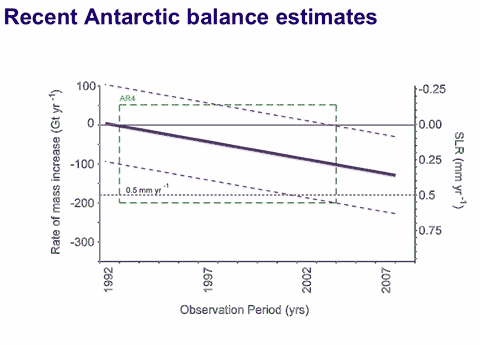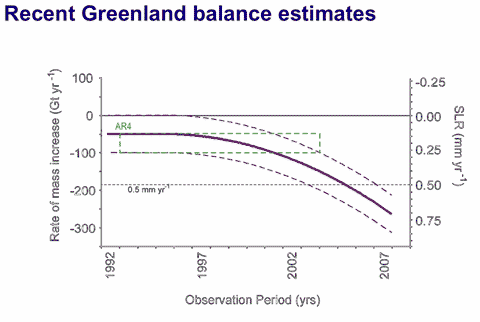 While we’re on the subject of ice, Australia’s Antarctic Climate & Ecosystem Cooperative Research Centre today launched two new publications: Polar ice sheets and climate change: global impacts [PDF], and Changes to Antarctic sea ice: impacts [PDF]. Described as “position analyses”, the papers provide an excellent overview of the current state of our understanding of ice sheets and how they’re behaving in a warming climate and the way Antarctic sea ice is responding to climate change.
While we’re on the subject of ice, Australia’s Antarctic Climate & Ecosystem Cooperative Research Centre today launched two new publications: Polar ice sheets and climate change: global impacts [PDF], and Changes to Antarctic sea ice: impacts [PDF]. Described as “position analyses”, the papers provide an excellent overview of the current state of our understanding of ice sheets and how they’re behaving in a warming climate and the way Antarctic sea ice is responding to climate change.
The reports were launched at an on-line briefing organised by the Australian Science Media Centre, and during Dr Ian Allison’s discussion of the role of melting ice sheets in sea level rise he showed two key slides — graphs that give the lie to assertions by sceptics that the melting’s stopped or that the impact is inconsequential. Here’s how our understanding of the mass balance of Antarctica has evolved:

The purple line is the central estimate of mass balance, declining steadily from the early 90s (with the uncertainty illustrated by the purple dotted lines). The green box is the position reported in the 2007 IPCC fourth report (based on work up to about 2005), and so the graph shows how the most recent work is showing an increased (and increasing) rate of mass loss. The picture for Greenland is a little more dramatic:

The ice sheet paper provides a nuanced overview of the latest research on sea level rise and what increased mass loss at both ends of the globe might mean for the planet. This is the take-home:
Accelerated ice discharge has been observed in both Greenland and Antarctica. Although it is unlikely that total sea level rise by 2100 will be as high as 2m, the probable upper limit of a contribution from the ice sheets remains uncertain.
In this case, uncertainty is not our friend.
The Antarctic sea ice presentation is also well worth reading. It provides the clearest explanation I’ve yet seen for the sea ice behaviour (not shrinking, but very slightly growing in area), and ties it in to interactions between the ozone hole and southern hemisphere climate. Recommended reading.

The second link to the PDF file is not working – can you possibly amend?
Cheers
Sonny
http://www.acecrc.org.au/drawpage.cgi?pid=publications&aid=797037
Sorry Sonny, and thanks password… the original link should be fixed now.